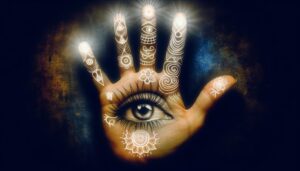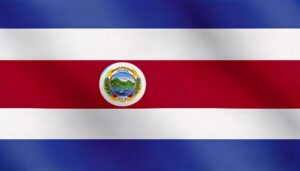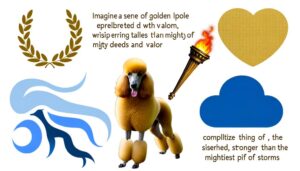Holy Trinity Symbol Catholic Meaning?
The Holy Trinity symbol in Catholicism encapsulates the profound theological mystery of one God in three distinct Persons: Father, Son, and Holy Spirit. This concept is supported by scriptural foundations such as Genesis 1:26 and Matthew 28:19.
Early Church figures like Tertullian and Augustine expounded on the co-equal and co-eternal nature of the Trinity. In Catholic art, the triangle and interlocking circles emphasize unity and distinctness.
Liturgically, the Trinity underpins pivotal rites and prayers. Theologically, concepts like perichoresis and the economic Trinity deepen understanding.
For further insights into its multi-faceted symbolism and significance, an exploration of these elements is essential.
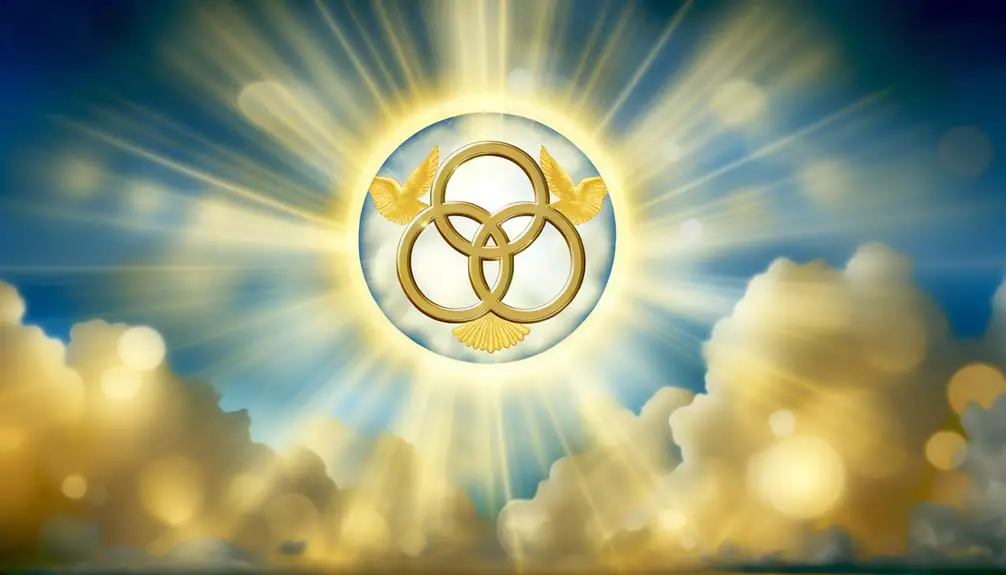
Key Takeaways
- The triangle in Catholic art symbolizes the unity and distinctness of the Father, Son, and Holy Spirit.
- Interlocking circles represent the unity and interrelationship among the three persons of the Trinity.
- The Nicene Creed affirms the Trinitarian belief, foundational to Catholic doctrine.
- Liturgical practices, like the Sign of the Cross, invoke the Holy Trinity, emphasizing its centrality in worship.
- Trinitarian symbols in church architecture manifest theological truths about the co-equal and co-eternal nature of the Godhead.
Scriptural Foundations
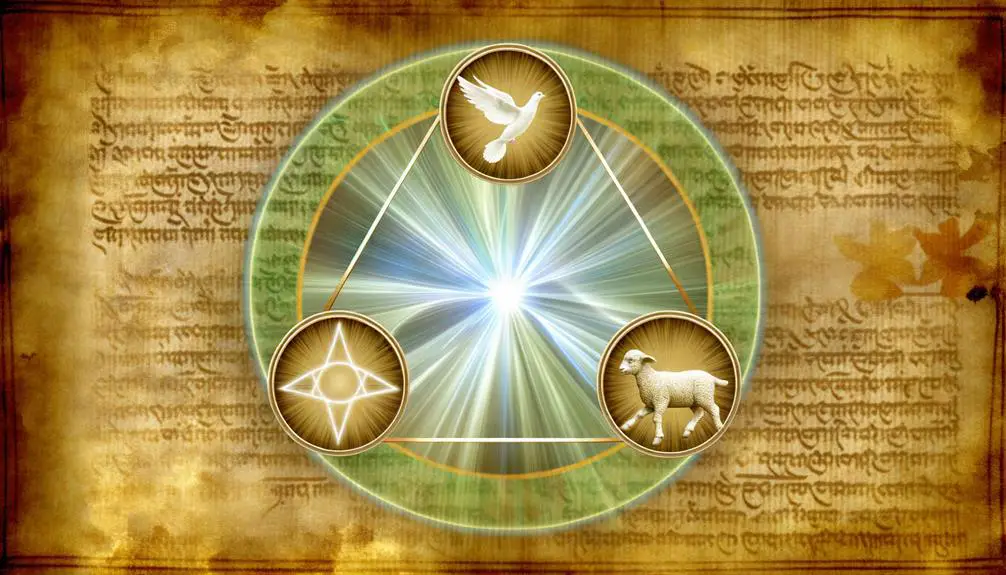
The scriptural foundations of the Holy Trinity in Catholic theology are deeply rooted in both the Old and New Scriptures, providing a rich tapestry of texts that illustrate the triune nature of God.
In the Old Scripture, the plural language in Genesis 1:26, 'Let us make man in our image,' implies a multiplicity within the Godhead. Isaiah 9:6 prophetically refers to the Messiah with divine titles, hinting at a complex unity.
The New Scripture offers explicit Trinitarian references, such as in Matthew 28:19, where Jesus commands baptism 'in the name of the Father, and of the Son, and of the Holy Spirit.' Additionally, 2 Corinthians 13:14 encapsulates the triune blessing, emphasizing the distinct yet unified presence of God in Christian belief.
Early Church Perspectives
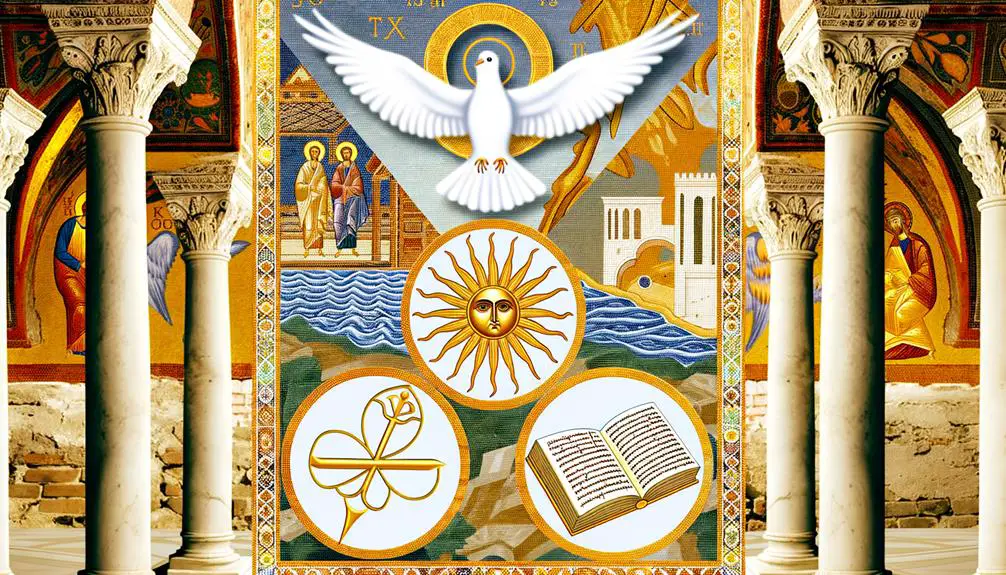
Early Church Fathers, such as Tertullian and Augustine, meticulously articulated the doctrine of the Holy Trinity, emphasizing its foundational role in Christian theology.
Tertullian's treatise 'Adversus Praxean' introduced the term 'Trinitas,' delineating the distinction yet unity between the Father, Son, and Holy Spirit.
Augustine further expounded this in 'De Trinitate,' employing analogies to elucidate the co-equal and co-eternal nature of the three Persons.
These theological expositions were pivotal in countering heretical views, such as Arianism, which challenged the divinity of Christ.
The Nicene Creed, formulated in 325 AD, solidified this Trinitarian doctrine, reflecting the consensus of the early Church.
Therefore, the meticulous work of these Fathers underpinned the doctrinal and theological constructs of mainstream Christianity.
Symbolism in Art
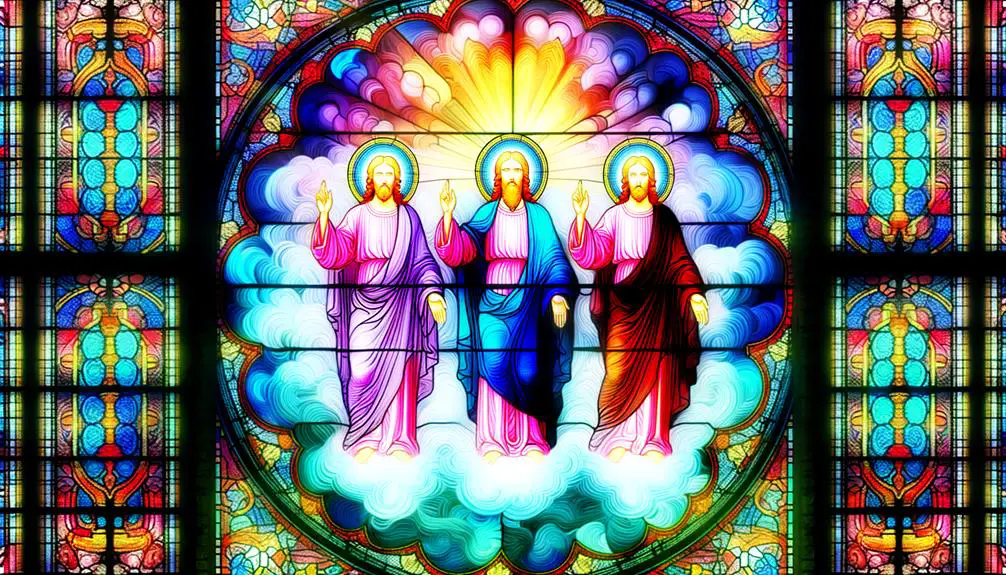
The symbolic representation of the Holy Trinity in art has been meticulously crafted through iconography and various historical artistic techniques, each reflecting theological principles.
Artists have employed specific color schemes and strategic use of light to underscore the divine nature and unity of the Father, Son, and Holy Spirit.
Analyzing these visual elements reveals how artistic choices convey complex doctrinal meanings to the observer.
Iconography and Representation
Iconographic depictions of the Holy Trinity in Catholic art often utilize distinct symbols and compositions to convey theological principles and doctrinal nuances. Artists employ various elements to reflect the unified yet distinct nature of the Father, Son, and Holy Spirit. These representations serve not merely as visual aids but as profound theological statements.
The equilateral triangle symbolizes the equality and unity of the three divine persons.
Representing the Holy Spirit, the dove often appears descending, symbolizing divine presence and inspiration.
Depicting God the Father holding the crucified Christ, with the Holy Spirit as a dove, the Throne of Grace embodies the sacrificial love and salvific plan of the Trinity.
Such imagery underscores the mystery and unity inherent in Trinitarian theology.
Historical Artistic Techniques
Building on the theological richness conveyed through iconographic depictions, historical artistic techniques employed symbolism to further articulate and reinforce the profound doctrines of the Holy Trinity in Catholic art.
Medieval and Renaissance artists often utilized geometric compositions, such as the equilateral triangle, to symbolize the equality and unity of the Father, Son, and Holy Spirit.
Additionally, artists incorporated specific gestures and postures to differentiate and yet harmonize the distinct persons within the Trinity. The use of interlocking circles and trefoils further embodied notions of interrelation and co-eternity.
Color and Light Symbolism
In Catholic art, the symbolism of color and light plays a pivotal role in conveying the theological dimensions and divine nature of the Holy Trinity. Artists often employ a rich palette to evoke the spiritual and doctrinal essence of the Father, Son, and Holy Spirit. The interplay of light and shadow accentuates the divine presence and unity within the Trinity.
White and Gold represent purity, divinity, and the light of God's presence, often associated with the Father.
Red symbolizes the sacrificial love and the Passion of Christ, typically linked to the Son.
Blue evokes the infinite nature of the Holy Spirit, as well as the celestial sphere.
These color choices are not merely aesthetic but serve to deepen the viewer's spiritual engagement and understanding.
The Triangle Symbol
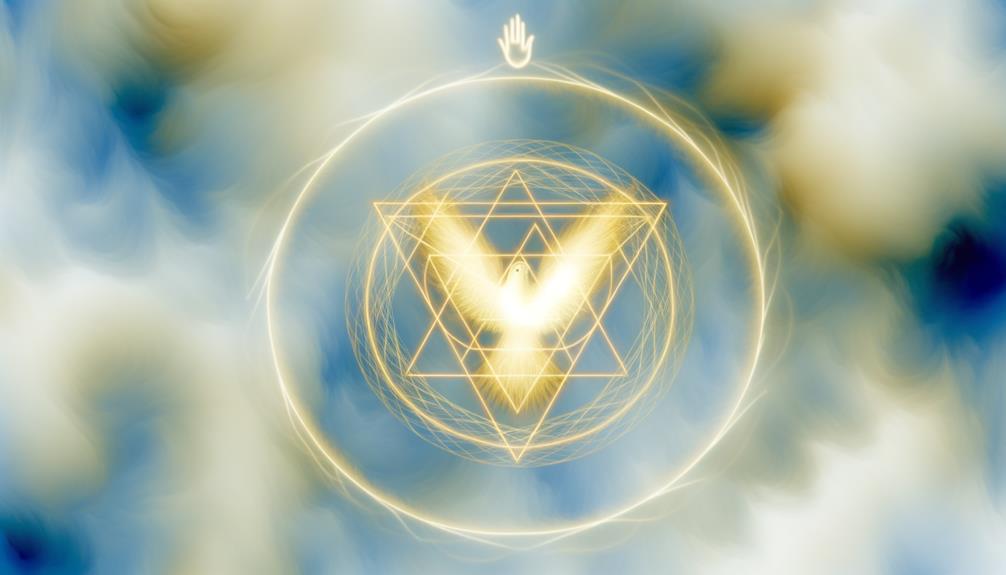
The triangle symbol in Catholic iconography serves as a profound representation of the Holy Trinity, encapsulating the unity and distinctness of the Father, the Son, and the Holy Spirit. Each side of the triangle signifies one Person of the Trinity, while the entire figure underscores their inseparability and co-equality.
This geometric form also evokes the theological concept of perichoresis, the interpenetration and mutual indwelling of the divine Persons, without loss of individual identity. The equilateral triangle, often used, further emphasizes equality and balance, reflecting the consubstantial and co-eternal nature of the Trinity.
Therefore, the triangle is not merely an abstract symbol but a visual theology, conveying complex doctrinal truths through elegant simplicity.
Interlocking Circles
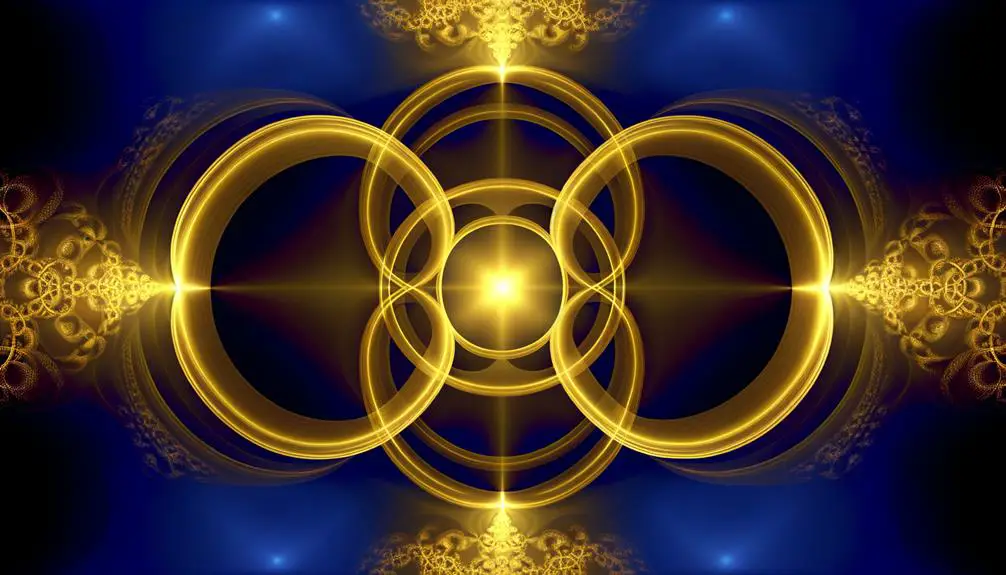
The motif of interlocking circles serves as a profound visual representation of the Holy Trinity, encapsulating the unity and interrelationship of the Father, Son, and Holy Spirit.
Each circle, while distinct in its form, intersects with the others, symbolizing the co-eternal and co-equal nature of the three divine persons within one Godhead.
This geometrical design not only underscores the indivisible essence of the Trinity but also highlights the harmonious coexistence within the divine mystery.
Symbolic Circle Unity
Symbolic representations of unity within the Holy Trinity are often depicted through the use of interlocking circles. These circles serve to illustrate the interconnected and indivisible nature of the Father, Son, and Holy Spirit. This geometric symbolism underscores essential theological concepts, emphasizing the completeness and equal standing of each Person within the Trinity.
The interlocking circles can be analyzed to yield deeper insights:
- Eternal Bond: The circles have no beginning or end, symbolizing the eternal existence of the Trinity.
- Perfect Equality: Each circle is identical, representing the co-equal and co-eternal nature of the Father, Son, and Holy Spirit.
- Unified Diversity: The overlapping sections indicate distinct persons yet a unified essence, reflecting the complex unity within the Godhead.
This intricate symbolism enriches our understanding of Trinitarian unity.
Trinitarian Relationship Representation
Interlocking circles serve as a profound visual representation of the Trinitarian relationship, encapsulating the theological depth of the Father, Son, and Holy Spirit's unity and distinction. This symbol, often referred to as the Borromean Rings, illustrates how three distinct entities can coexist in perfect harmony.
Each circle maintains its individuality while simultaneously being inseparably linked to the others, signifying both the co-equality and co-eternity of the Trinitarian persons. The intersecting areas emphasize their mutual indwelling, a concept known as perichoresis, which denotes the intimate and reciprocal relationship among the Divine persons.
This imagery aids the faithful in comprehending the intricate balance of unity and diversity within the Holy Trinity, fostering a deeper theological reflection and spiritual appreciation.
Liturgical Significance
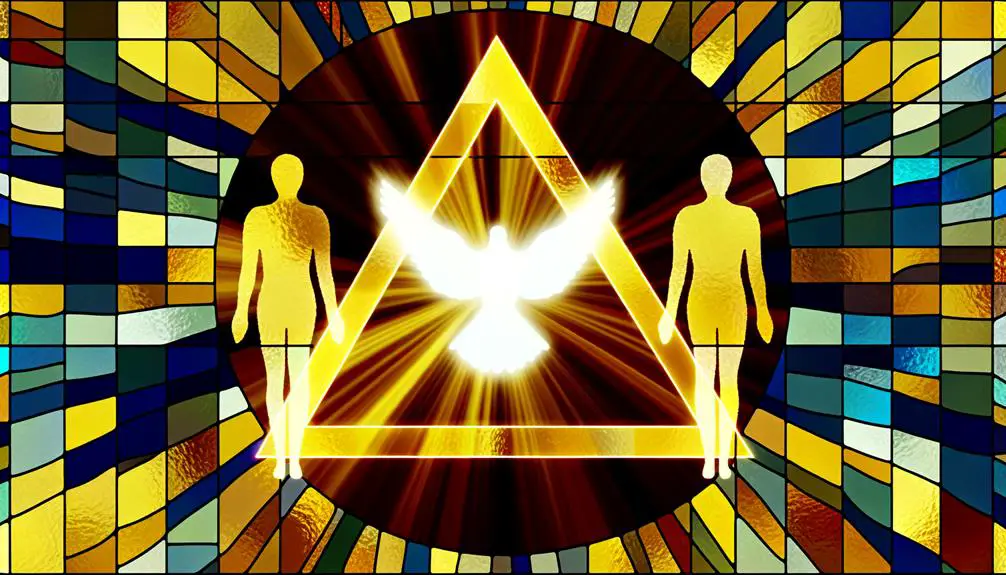
In examining the liturgical significance of the Holy Trinity symbol within Catholic worship, it becomes evident that this emblem serves as a profound representation of the unity and co-equality of the Father, Son, and Holy Spirit. The symbol is intricately woven into various aspects of liturgical life, enhancing the spiritual experience and understanding of the faithful.
- Liturgical Celebrations: The Trinity is explicitly invoked in pivotal rites such as the Eucharistic Prayer and the Sign of the Cross, emphasizing divine mystery.
- Sacramental Theology: The Trinity underpins the theology of sacraments, reinforcing the deep connection between divine grace and human participation.
- Liturgical Art and Architecture: Churches often incorporate Trinitarian symbols in their design, visually manifesting theological truths and guiding worshippers in contemplation.
Role in Prayer
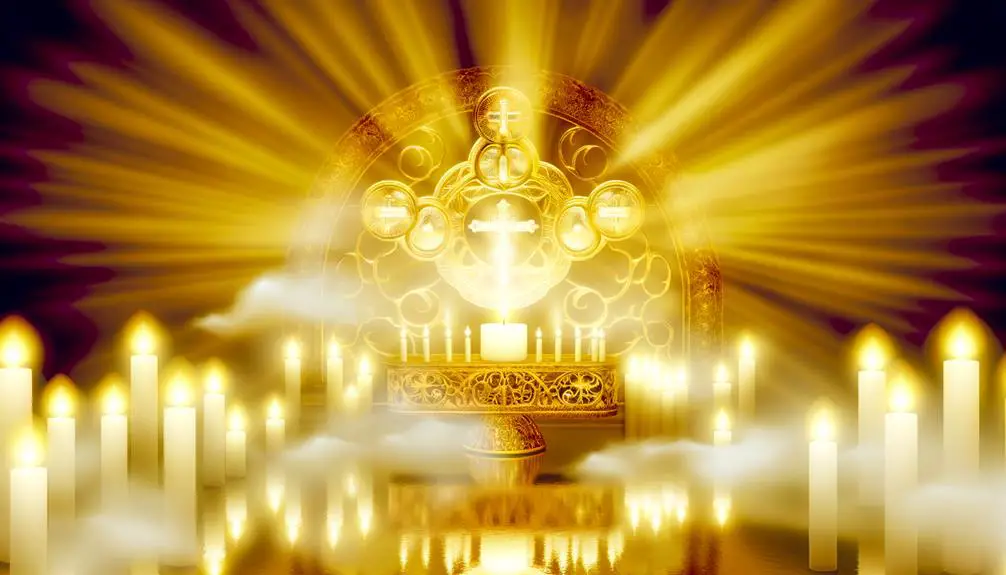
Building upon the liturgical significance, the Holy Trinity also plays a pivotal role in the prayer life of Catholics, serving as both the foundation and the focal point of devotional practices.
Catholics often begin and end their prayers with the Sign of the Cross, invoking the Father, Son, and Holy Spirit, thereby reaffirming their faith in the Triune God. This Trinitarian invocation is not merely ritualistic; it embodies a profound theological affirmation of God's unified yet distinct personhoods.
Prayers such as the 'Glory Be' further underscore the centrality of the Trinity, encapsulating the eternal nature and co-equality of its three persons.
Consequently, the Holy Trinity permeates every facet of Catholic prayer, guiding believers toward deeper spiritual communion and understanding.
Theological Interpretations
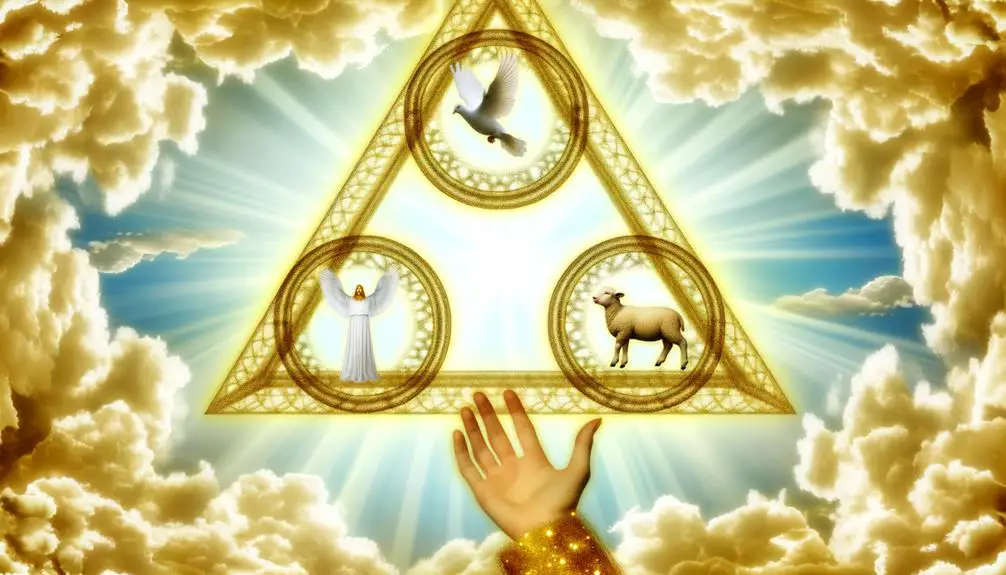
Theological interpretations of the Holy Trinity within Catholicism explore the intricate relationship between its three distinct persons—Father, Son, and Holy Spirit—while maintaining the unity of one divine essence. This doctrine, central to Catholic theology, seeks to elucidate how three co-equal, co-eternal persons exist within a singular divine nature.
Scholarly discourse often focuses on:
- Perichoresis: The mutual indwelling and interpenetration of the three persons, emphasizing their inseparable unity.
- Economic Trinity: The manifestation of the Trinity in the history of salvation, highlighting distinct roles in creation, redemption, and sanctification.
- Immanent Trinity: The internal relationship within the Godhead, independent of creation, reflecting eternal and unchangeable divine life.
These interpretations deepen the understanding of God's triune nature.
Contemporary Reflections
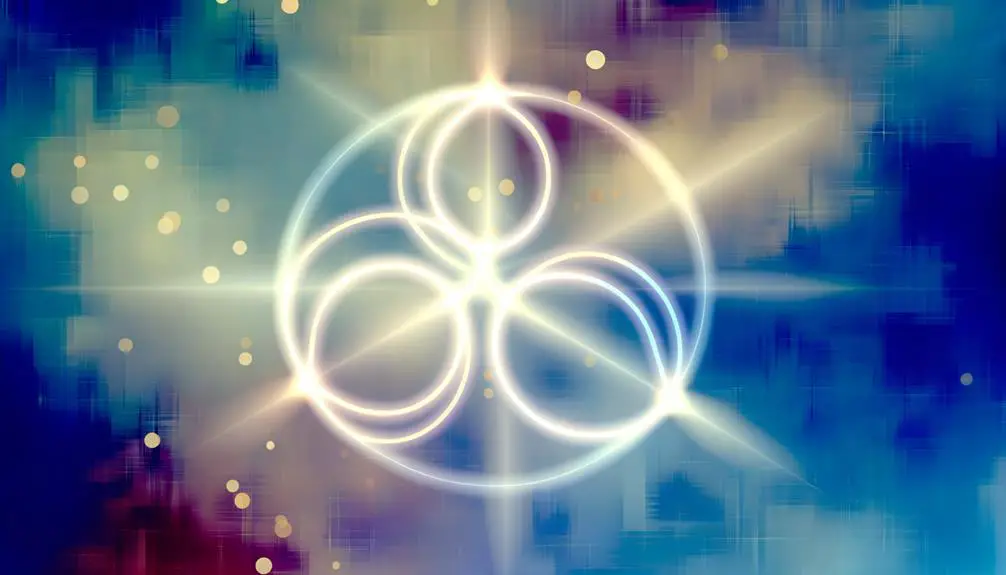
Contemporary reflections on the Holy Trinity within Catholicism often engage with modern philosophical and cultural contexts to additionally illuminate its timeless doctrinal significance.
Scholars and theologians explore the relational dynamics of the Trinity to address contemporary issues such as community, identity, and interdependence. This triune relationship offers a model for understanding unity amidst diversity, a concept increasingly relevant in today's pluralistic societies.
Philosophical discourses on personhood and being are enriched by Trinitarian theology, which posits a profound interconnectedness that transcends individualism. Moreover, ecumenical dialogues benefit from Trinitarian perspectives, fostering deeper interfaith understanding.
Conclusion
The rich tapestry of the Holy Trinity symbol in Catholicism intertwines scriptural foundations, early Church perspectives, art, and theology.
Like a divine symphony, each element harmonizes to reveal a profound mystery central to the faith.
The triangle and interlocking circles serve as visual hymns, guiding believers in prayer and liturgy.
Contemporary reflections continue to unravel these ancient threads, ensuring the symbol's enduring relevance and inspirational power in the ever-evolving landscape of faith.

